Oral versus intravenous antibiotics for bone and joint infection

Oral antibiotic therapy was noninferior to intravenous antibiotic therapy when used during the first 6 weeks for complex orthopedic infection, as assessed by treatment failure at 1 year” Li et al (2019). Abstract: BACKGROUND: The management of complex orthopedic infections usually includes a prolonged course of intravenous antibiotic agents. We investigated whether oral antibiotic therapy […]
Implementation of a paediatric peripheral intravenous catheter care bundle
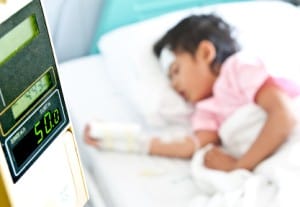
To improve paediatric peripheral intravenous catheter (PIVC) care through the implementation of care bundles” Kleidon et al (2019). Abstract: AIM: To improve paediatric peripheral intravenous catheter (PIVC) care through the implementation of care bundles. METHODS: A pre-post study using mixed methods (clinical audit, staff survey, parent interviews) in 2016 at a tertiary paediatric hospital in […]
Vascular access options for neonates undergoing cardiac surgery

Neonates undergoing congenital heart surgery require central venous access for diagnostic information and medication administration. There are multiple options for central access including peripherally inserted central catheters, umbilical, central venous, and transthoracic intracardiac lines” Stein et al (2019). Abstract: Neonates undergoing congenital heart surgery require central venous access for diagnostic information and medication administration. There […]
Article describes novel ultrasound-guided approach to the axillary vein

We propose a novel ultrasound-guided puncture technique of axillary vein for centrally inserted central catheter placement, which consists in the oblique-axis view of the axillary vein coupled with the in-plane puncture. The main objectives of this study were feasibility and safety of this approach. The primary endpoints were the success rate and early complications; the […]
Predictive risk factors of venous thromboembolism associated with PICC
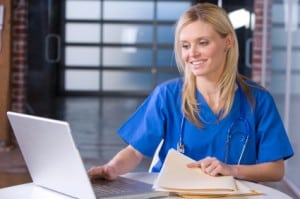
Peripherally inserted central catheters(PICC) lines are becoming increasingly popular in solid cancer patients for the administration of chemotherapy. This study aims looking at the incidence of PICC line related and distant thromboembolism associated with these catheters and exploring risk factors” Al-Asadi et al (2019). Abstract: AIMS: Peripherally inserted central catheters(PICC) lines are becoming increasingly popular […]
Characteristics of medicine short hospital stays and infusion therapy

Interventions to avert hospital admission or reduce length of stay may be more effective if they are accessible outside typical working hours and provide access to intravenous therapy and radiological investigations.” Verma et al (2019). Abstract: BACKGROUND: Short hospital stays may represent opportunities to avert unnecessary admissions or expedite inpatient care. To inform the design […]
Review of injection-related iatrogenic peripheral nerve injuries

The purpose of this clinical study was to present our experience in the management of various types of injection-related peripheral nerve injuries and discuss various issues that are associated with this subset of peripheral nerve injuries” Desai et al (2019). Abstract: OBJECTIVE: A retrospective analysis of surgically treated 354 cases of injection-related iatrogenic peripheral nerve […]
Application of infrared thermography in diagnosing PICC infections
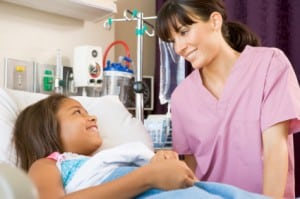
The objective of this preliminary study is to use infrared thermography to discern whether there is an infection in patients with a central venous catheter and if so, to undertake a close follow-up of its evolution, after administering a therapy” Benavent Casanova et al (2019). Abstract: Children affected by oncological diseases are often fitted with […]
PICC for the induction chemotherapy phase of acute myeloid leukemia

The incidence of peripherally inserted central catheter (PICC)-related adverse events has been uncertain in the setting of acute myeloid leukemia (AML) compared with the incidence of centrally inserted central catheter (CICC) adverse events” Picardi et al (2018) Abstract: BACKGROUND: The incidence of peripherally inserted central catheter (PICC)-related adverse events has been uncertain in the setting […]
Management of central line-related upper extremity deep vein thrombosis
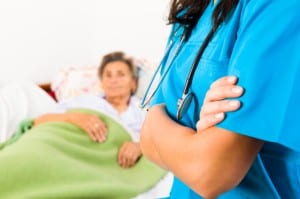
Central-venous devices are risk-factors for upper extremity deep vein thrombosis. We surveyed physicians to identify practice-patterns and adherence to American College of Chest Physicians guidelines” Cires-Drouet et al (2019). Abstract: OBJECTIVES: Central-venous devices are risk-factors for upper extremity deep vein thrombosis. We surveyed physicians to identify practice-patterns and adherence to American College of Chest Physicians […]
Prospective evaluation of a dynamic insulin infusion algorithm

This study primarily aimed to evaluate the efficacy of a dynamic algorithm of intravenous insulin therapy in non-critically-ill patients, and addressed its safety and feasibility in different departments of our university hospital” Montanier et al (2019). Abstract: INTRODUCTION: Insulin infusion is recommended during management of diabetic patients in critical care units to rapidly achieve glycaemic […]
Mechanism of extravasation via umbilical venous catheters

A rare complication of umbilical venous catheter (UVC) insertion is the extravasation of the infusate into the peritoneal cavity” Hargitai et al (2019). Abstract: A rare complication of umbilical venous catheter (UVC) insertion is the extravasation of the infusate into the peritoneal cavity. We report 3 cases of abdominal extravasation of parenteral nutrition (PN) fluid […]
Web-based solution for bidirectional EHR-infusion pump communication
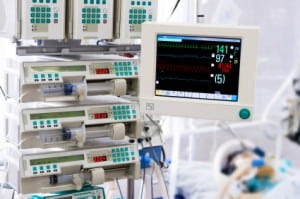
Smart Agent is a web-based solution for establishing bidirectional communication between an infusion pump and an electronic health record (EHR). It eliminates the need for clinician double check of medication administration using an infusion pump” Griffiths et al (2019). Abstract: Smart Agent is a web-based solution for establishing bidirectional communication between an infusion pump and […]
Reducing pain and fear associated with phlebotomy

This study aimed to investigate the effects of the Buzzy, Jet lidokaine, bubble-blowing and inhalation aromatherapy with lavender essence on pain, stress and fear in children undergoing phlebotomy” Alemdar and Aktaş (2019). Abstract: Purpose: This study aimed to investigate the effects of the Buzzy, Jet lidokaine, bubble-blowing and inhalation aromatherapy with lavender essence on pain, […]
Catheter-related bloodstream infections with coagulase-negative staphylococci

The main objective of this study was to elucidate the role of systemic antibiotic therapy in the setting of catheter removal in adult patients with CoNS-CRBSI” Hebeisen et al (2019). Abstract: Background: Catheter-related bloodstream infections (CRBSI) with coagulase-negative Staphylococci (CoNS) are a common source of hospital-acquired bloodstream infections. The main objective of this study was […]
Intravenous compared with oral iron for the treatment of iron-deficiency anemia in pregnancy

To assess the effect of intravenous versus oral iron on hematologic indices and clinical outcomes for iron-deficiency anemia (IDA) in pregnancy” Lewkowitz et al (2019). Abstract: Objective: To assess the effect of intravenous versus oral iron on hematologic indices and clinical outcomes for iron-deficiency anemia (IDA) in pregnancy. Study design: Searches in Ovid Medline, Embase, […]
Patients knowledge and experience with peripheral intravenous catheters

The aim of this study is to investigate patients knowledge and experience with catheters, to design patient interventions to reduce inappropriate catheter use” Laan et al (2019). Abstract: PURPOSE: Inappropriate use of urinary and intravenous catheters is still frequent. The use of catheters is associated with some serious complications, such as health care associated infections […]
Vascular access infection by Staphylococcus aureus

Hemodialysis patients are particularly vulnerable to Staphylococcus aureus infection, with the vascular access serving as the site of entry for this formidable pathogen” Chu et al (2019). Abstract: Hemodialysis patients are particularly vulnerable to Staphylococcus aureus infection, with the vascular access serving as the site of entry for this formidable pathogen. Patients with arteriovenous grafts […]
Vascular access for hemodialysis in the elderly

The objective of this study was to compare the outcomes of arteriovenous fistulas (AVFs) with arteriovenous grafts (AVGs) in a large population-based cohort of elderly patients in the United States” Arhuidese et al (2019). Abstract: OBJECTIVE: The objective of this study was to compare the outcomes of arteriovenous fistulas (AVFs) with arteriovenous grafts (AVGs) in […]
Insulin balanced infusion system closed-loop system
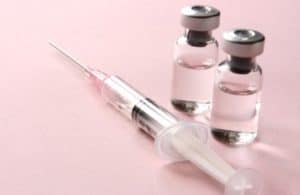
Optimal glucose control has been shown to be useful in critical care as well as in other settings. Glucose concentrations in patients admitted to critical care are characterized by marked variability and hypoglycemia due to inadequate sensing and treatment technologies” Hashemi et al (2019). Abstract: BACKGROUND: Optimal glucose control has been shown to be useful […]
Insulin pumps and continuous glucose monitors

We sought to assess fellows’ knowledge, attitudes, and practices regarding insulin pumps and CGMs using a mixed-methods survey” Marks et al (2019). Abstract: BACKGROUND: Recent data demonstrating a lack of improvement in average hemoglobin A1c levels despite the increased use of insulin pumps and continuous glucose monitors (CGMs) suggest that patients are not using these […]
Patient-reported complications related to PICC

The objective of this study was to systematically elicit and characterise PICC-related complications as experienced by patients during and after hospitalisation” Krein et al (2019). Abstract: OBJECTIVE: Peripherally inserted central catheters (PICC) are frequently used to deliver medical therapies, but our knowledge regarding PICC-related complications remains incomplete. The objective of this study was to systematically […]
Outcomes of patients with a history of injecting drug use and receipt of OPAT

Our aim is to publish our outcomes in this setting, to inform other clinicians’ decisions regarding PWID in OPAT” O’Callaghan et al (2019). Abstract: People who inject drugs (PWID) are susceptible to endovascular and deep-seated infections which require prolonged antibiotic therapy. There are concerns regarding this cohort’s suitability for outpatient parenteral antimicrobial therapy (OPAT), but […]
Outpatient infusion center with intravenous magnesium therapy

Exploratory study to investigate the effectiveness of intravenous magnesium as an abortive for status migrainosus in an outpatient infusion center, and characterize the patients who benefit from the therapy” Xu et al (2019). Abstract: OBJECTIVES: Exploratory study to investigate the effectiveness of intravenous magnesium as an abortive for status migrainosus in an outpatient infusion center, […]
Accuracy of two different approaches in locating the tip of the central venous catheter

The aim of this study was to compare the accuracy of two different approaches in locating the tip of the Central venous catheter (CVC) at the suggested vascular zone” Jarineshin et al (2019). Abstract: Introduction: The present guidelines recommend placing the catheter tip in the superior vena cava (SVC) above the pericardial cephalic reflection. The […]
Empowering patients to prevent CLABSI

The aim of the EPIC2 project was to reduce CLABSI rates on a hematology-oncology specialty unit with historically high CLABSI rates despite prior quality improvement efforts” Suttle et al (2019). Abstract: BACKGROUND: Central line-associated bloodstream infections (CLABSIs) are associated with an increased risk of mortality, prolonged hospitalizations, and inflated cost of care. Patients in the […]
Clinically-indicated replacement versus routine replacement of peripheral venous catheters

“There is moderate-certainty evidence of no clear difference in rates of CRBSI, thrombophlebitis, all-cause BSI, mortality and pain between clinically indicated or routine replacement of PIVC” Webster et al (2019).
Impact of clinical practice on vessel health in vascular access

Vascular access devices are commonly inserted devices that facilitate the administration of fluids and drugs, as well as blood sampling. Despite their common use in clinical settings, these devices are prone to occlusion and failure, requiring replacement and exposing the patient to ongoing discomfort/pain, local vessel inflammation and risk of infection” Hawthorn et al (2019). […]
Efficacy of vein visualisation devices for neonatal vascular access

The aim of this randomized controlled trial was to examine the efficacy of vein visualization devices and the routine method for insertion of peripheral intravenous catheters (PIVCs) in preterm infants” Çağlar et al (2019). Abstract: The aim of this randomized controlled trial was to examine the efficacy of vein visualization devices and the routine method […]
Risk factors for vascular catheter-related bloodstream infections
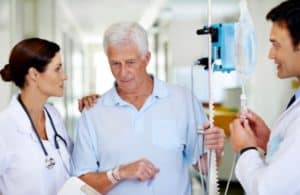
To determine the risk factors for acquiring central line-associated blood stream infections (CLABSI) in pediatric intensive care units” Torre et al (2018). Abstract: OBJECTIVES: To determine the risk factors for acquiring central line-associated blood stream infections (CLABSI) in pediatric intensive care units and to investigate the incidence and etiology of CLABSI in pediatric intensive care […]

